Vegetable dishes are usually tasteless for those who like to eat meat. Still, I am convinced that they will submit to the incredible flavor of this vegetable curry prepared with myriad herbs and spices.
All communities in Malaysia love this Malaysian Chinese vegetable curry recipe. There are other variations, but this Chinese version includes more turmeric powder and is less spicy. Its intricate flavor rivals any curries prepared with meat, and I am confident that this curry will appeal to vegetarians and carnivores.
Once you have all the ingredients, the Malaysian vegetable curry is easy to prepare. Let’s go through the details one by one.
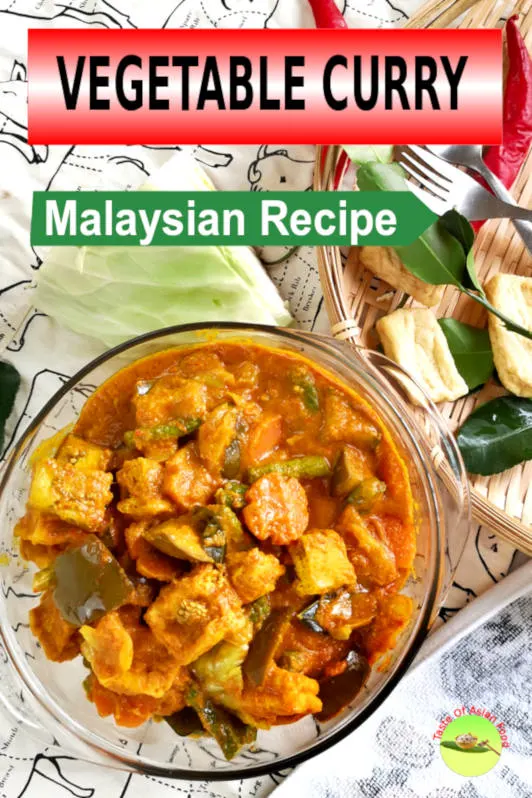
Note: This post may contain affiliate links. Please read my privacy policy for more info. I may receive commissions for purchases made through links in this post. As an Amazon Associate, I earn from qualifying purchases.
1. Prepare the curry paste
This step is straightforward. In short, you only need to blend all the ingredients listed in the recipe until it becomes a paste. You need a food processor or blender to speed up the process. However, there is some information you need to know before you start to get everything correct.
a. Gather the ingredients required
Here are some tips to make the perfect curry paste.
Ginger. Although ginger is not the primary ingredient in Chinese vegetable curry, most Chinese like to include it. This cooking habit is likely because fresh ginger is used in most Chinese cuisine.
Candlenut. Candlenut is the thickening agent for the curry. Curry is a thick stew, not a clear liquid. These nuts are cheap and readily available locally. Cashew nuts are an excellent substitute if it is unavailable. You can omit it if you intend to include potato in the vegetable curry recipe since potato will thicken the curry.
Onion. Our restaurant has used red onions for cooking curries and rendang for years. It is widely available as compared to yellow onions. The types of onion have a negligible effect on the final result so that you can substitute with yellow onion.
Lemongrass. Use only the white section of the lemongrass. Discard the green section, which is fibery and less aromatic. Remove the outer sheath of lemongrass, then slice it thinly before adding it to the electric food processor.
Red chili. We are referring to the Serano red chili, not the bell pepper. Remove the pith and seeds partially or entirely if you want to keep the flavor, but to minimize the hotness, Cut the chilies into short sections to facilitate processing. You may also want to partially replace it with Bird’s Eye chili, red pepper flakesor dried red chili for a spicier flavor.
Galangal. It is a popular ingredient in Malaysian cuisine. Galangal is hard and fibery, especially the part close to the skin. You must remove all the skin, as the hard and fibery part is hard to blend into a smooth paste. These fibrous parts will remain small pieces, even blending for ten minutes. The resulting curry paste will not be smooth if this happens.
b. Blend the ingredients into a paste
The food processor will not function effectively with the limited water content of the herbs. You need to add some cooking oil and water to facilitate the process. I prefer to add all the cooking oil required to saute the paste into the food processor. You can use coconut oil or any other vegetable of your choice.
Keep the amount of water added to a minimum, as it takes longer to saute the paste until it becomes aromatic if it is too wet.
Blend the herbs until it becomes a smooth paste. The duration depends on the power and quantity of the herbs you have. It usually takes about five to ten minutes, and there is no harm in blending it even longer.
c. Saute the paste
Transfer the red curry paste to a large skillet, Dutch oven, or wok. Saute over low heat until all the water is evaporated. By this time, the oil will bubble at the edge of the paste and become very aromatic.
The paste will tend to stick to the surface. Therefore, please keep stirring occasionally, especially when it starts to dry.
Remove it from the pan, and move on to the next step.
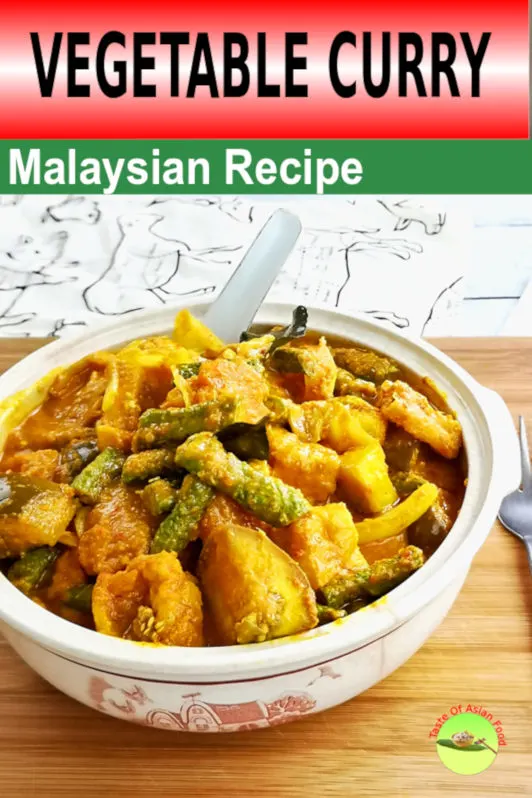
2. Preparing the vegetables and tofu
The vegetables I use in this recipe are tofu (taufu) puffs, long beans, cabbage, carrots, and eggplant. The choice varies considerably from one recipe to another. I use the common vegetables among the Malaysian Chinese to cook the curry. Try to pick vegetables with various colors, shapes, and textures. You can use other ingredients to prepare the mixed vegetable curry: potatoes, sweet potatoes, tomatoes, broccoli florets, cauliflower florets, bell peppers, baby corn, pumpkin, okra, green beans, and snow peas.
Since the vegetables will not brown like meat, I do not stir-fry them before adding them to the curry. It does not make any noticeable difference to the result.
Cut the tofu puffs into half. These puffs act like a sponge and absorb plenty of gravy due to their porous structure. It is precooked when purchased and only needs added to the curry last. You can use any firm tofu as a substitute if it is unavailable. Another good alternative for the tofu puffs is seitan/gluten balls.
3. Curry powder, coconut milk, and stock
a. Choice of the curry powder
Curry powder is the ingredient that significantly transforms the flavor of a pot of curry.
I am using store-bought Malaysian curry powder. Most Malaysian curry powders taste similar because they are made from the same spices. However, there is a vast difference between curry powders from different countries. I suggest you use Malaysian curry powder for this easy vegetable curry recipe and avoid Japanese curry powder as it tastes entirely different.
I do not suggest you purchase individual spices to make your curry powder blend unless you use them frequently. It is time-consuming, and the flavor will deteriorate over time.
Check out this Kapitan chicken recipe if you are interested in meat dishes. It is a famous Nyonya curry influenced by Malay and Chinese cooking.
b. Coconut milk
Coconut milk plays an indispensable role in making this Malaysian vegetable curry. I always like to use fresh coconut milk extracted from grated coconut flesh, readily available in most tropical Asian countries. It is best to use it immediately, or it can be frozen for up to a few weeks. If unavailable, use the coconut milk in the can or tetra pack. Make sure it is full-fat coconut milk suitable for cooking and contains 20 to 25% of fat. This is because coconut milk is added with other ingredients for drinking instead of cooking.
c. Vegetable broth
The vegetarian curry tastes great if you use stock instead of water. We conveniently use vegetable broth prepared from scratch in our restaurant. However, if you decide not to spend too much time making this dish, consider using store-bought vegetable bouillon or powder. There is vegetable bouillon powder available with no MSG added.
4. Steps to cook the curry
Now it comes to the final step, i.e., to braise vegetables. I’ll break it down so you will not miss any details that might affect the outcome.
- Heat the curry paste in the pan. Add turmeric and curry powder. Add a stalk of curry leaves (if you have) to accentuate the taste.
- Pour half a cup of coconut milk and top up with the vegetable stock until it is sufficient to form a thick gravy. This will make it a creamy vegetable curry.
- Add the vegetables that need more cooking time, followed by those that need less time. So, the sequence is the carrot, cabbage, eggplant, and long bean. Add more stock if necessary along the way.
- It takes five to ten minutes over medium heat until all the vegetables become soft.
- Season with sugar and salt.
- Once the vegetables are soft, add the tofu puffs. Remove from heat once the curry returns to a boil. The color will become dull if you cook it for too long.
- Serving this vegetable curry with plain rice, basmati rice, or naan bread.
This Malaysian-style Chinese Curry recipe is quite different from the Indian curries.
You will notice that it does not contain garam masala and other Indian spices.
If you want to try other curry recipes, here is the recipe for green curry from Thailand. You may also like to try the chicken varuval, an authentic Indian Curry.
5. Frequently asked questions
Here are some frequently asked questions I received from my readers about the curry vegetable recipe and would like to answer here:
1. Which curry powder to use?
I use store-bought Malaysian curry paste (Babas brand Curry powder).
The recipe also works well for Thai or Indian curry powder but yields a different flavor.
2. Can I make curry powder at home?
Absolutely. You need to put all the dry spices in a spice blender to grind them into powder.
Here are the spices for the Malaysian curry powder: 4 dried red chilies, 4 cardamom pods, 1 cinnamon stick (5cm length), 4 tbsp coriander seeds, 2 tbsp cumin seeds, 2 tsp fennel seeds, 10 cloves, 10 black peppercorns, and 1 tsp turmeric powder.
3. Can I substitute fresh coconut cream with milk?
You can substitute it with milk or yogurt, but the taste differs. Coconut milk is not only to make it look good and creamier but has a unique flavor. Coconut cream in a can is the best substitute for a fresh one. The words coconut cream and milk are used by different brands, which is confusing. What is required for the curry is coconut cream (or labeled as milk) with a 24% fat content. It is unsuitable if the fat content is significantly lower than this amount.
4. Can I use other vegetables?
Since this is a curry vegetable recipe, you can use other vegetables such as bean curd skin, fried gluten balls, tomatoes, potatoes, cauliflower, and broccoli. Tomato paste is also a suitable ingredient to improve the flavor.
5. What other vegetables can I use?
Green peas and snap peas are a good addition to this veggie curry. You can also add some green and red bell peppers. Also, chop some coriander leaves (fresh cilantro) to garnish before you serve.
Vegetable Curry (Malaysian Chinese style)
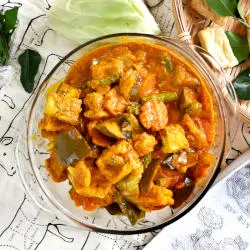
Vegetable dishes are usually described as tasteless for those who like to eat meat, but I am convinced that they will submit to the incredible flavor of this vegetable curry prepared with a myriad of herbs and spices.
Ingredients
To blend (A)
- 10g ginger
- Four candlenuts
- 120g onion/shallots
- 10g garlic
- 40g lemongrass (edible part)
- 70g red chili
- 60g galangal
- Two dry chili
- 4 tbsp cooking oil
To season and simmer (B)
- 1 tbsp (6g) turmeric powder
- 4 tbsp (28g) Malaysian curry powder
- One stalk curry leaves
- Three kaffir lime leaves
- 12g salt
- 15g sugar
- 200ml coconut milk
- 100ml vegetable stock (or water with 1 tsp vegetable seasoning powder)
The vegetables (C)
- 100g tofu puffs
- 150g long bean
- 100g cabbage
- 150g carrot
- 200g eggplant
Instructions
- Cut all the ingredients in (A) into small pieces. For the lemongrass, use only the white section. For the chili, remove the seeds and the piths. For the galangal, make sure to remove the skin altogether.
- Blend until it becomes a smooth paste.
- Saute the curry paste over low heat until it turns aromatic.
- Add the remaining seasoning in (B).
- Add the coconut milk and vegetable stock to form a gravy.
- Add the carrot, cabbage, eggplant, and long bean follow this sequence. Add more stock if necessary along the way.
- It takes five to ten minutes until all the vegetables become soft.
- Once the vegetables are soft, add the tofu puffs.
- Remove from heat once the curry returns to a boil. Serve with plain rice.
Recommended Products
As an Amazon Associate and member of other affiliate programs, I earn from qualifying purchases.
Nutrition Information:
Yield:
3Serving Size:
1Amount Per Serving: Calories: 889Total Fat: 60gSaturated Fat: 22gTrans Fat: 0gUnsaturated Fat: 30gCholesterol: 72mgSodium: 3101mgCarbohydrates: 58gFiber: 11gSugar: 14gProtein: 37g
This data was provided and calculated by Nutritionix on 8/8/2019

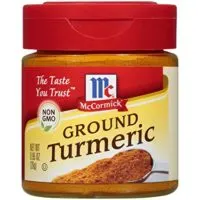
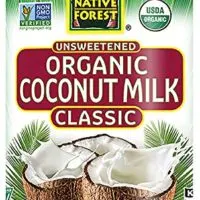
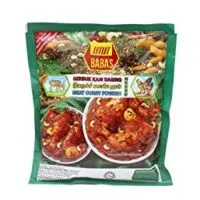
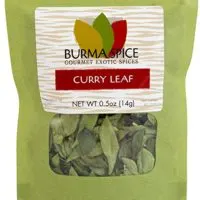
Helen
Thursday 10th of September 2020
Hi. I usually use Baba’s Fish Curry Powder for vegetables curry. The ingredients are same except the curry powder. I would cook this with just long beans , tofu puffs and prawns to go with other condiments for nasi lemak like ayam goreng rempah and sambal ikan bilis.
Kathy
Saturday 22nd of August 2020
Hi KP Kwan,
Thank you for posting this recipe. I cooked this tonight. I didn't have any lemon grass or kaffir lime leaves, so I made it without those two ingredients. It was still very delicious!
KP Kwan
Sunday 23rd of August 2020
Hi Kathy, That is great. I hope you like it:) KP Kwan
Joyce
Friday 9th of August 2019
I’ve been trying to remember this curry for the last 20 years! I learned it from my ex’-husband’s girlfriend from Singapore I Couldn’t remember a couple of ingredients that you listed. I am going to make this tonight! Thank you!
KP Kwan
Sunday 11th of August 2019
Hi Joyce, Thanks for trying the recipe and hope it turns out fantastic! KP Kwan
KP Kwan
Friday 9th of August 2019
Hi, this is KP Kwan. I am happy to see you in this comment area, as you have read through my recipe. I am pleased to reply to any questions and comments as soon as possible.